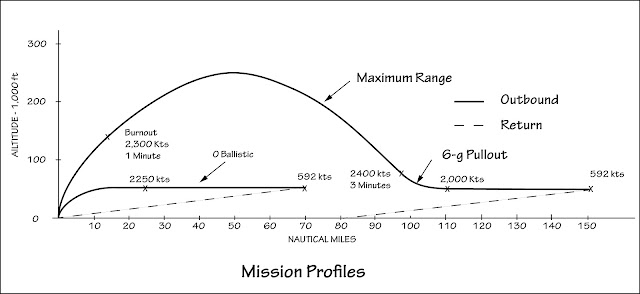I dismissed it out of hand although the Germans had not. In World War
II, they developed the cannon-armed Me 163 interceptor that was rocket powered and had very high
performance. One of the first aviation books that I remember reading as a
preteen was Rocket Fighter by Mano
Ziegler, a WW II Luftwaffe pilot who flew it. Although legend has it that the Komet was more dangerous for
its pilot than the B-17 crews that he was attacking, it was reportedly easy to
fly and phenomenally fast for the time. The main problem was its fuel, C-Stoff (57% methanol/ 30% hydrazine/
13% water), and oxidizer, T-Stoff
(80% concentrated hydrogen peroxide / 20% oxoyquinoline. The combination was
hypergolic, meaning it ignited just from being mixed, without the need for an
ignition source. The Germans developed a process for safely fueling the Komet
but a crash on takeoff or landing (particularly from the rough-and-ready fields available) was likely to result in an explosion or fire.
It turns out that the rocket-propelled interceptor proposal
was a paper dated 8 June 1950 that was written by a U.S Navy officer, Commander Robert
C. Truax, who was also literally a rocket scientist. It was a summary
description and analysis promoting the development of a destroyer-based,
rocket-powered interceptor. In this case, furfuryl alcohol was the fuel and nitric acid was the oxidizer. A small engine was provided for services and cruise; a much larger one provided the thrust and control for vertical takeoff and acceleration.
In Truax's mission scenario, the interceptor would be launched vertically from the fantail of a picket ship, in this case a Gearing-class destroyer that would carry five of the aircraft.
After a flight profile measured in minutes, it would descend by
parachute to the sea, from which it would be recovered to be prepared for its next mission.
The range depended on the profile flown, ranging from zero ballistic (70 nm) to full ballistic (150 nm). Top speed was about Mach 4.
(Note that the full ballistic profile meant a recovery about 80 nautical miles from the launch point for a straight-out mission.)
An AN/APS-25 radar was to be used to locate and navigate toward the incoming bombers. 1,500 lbs of the 13,000 lbs gross weight was allocated to the weapons, which were yet to be defined. Aerial mines detonated by proximity fuses were one possibility.
In his paper, Truax noted that significant experience had been gained since the war with liquid-fuel rockets, including over 200 flights of the Bell X-1 with a rocket as its sole power plant. The Douglas D-558-2 was about to fly with a rocket engine. The smaller rocket engine in his design was one in development under contract to the Navy.
Although
far-fetched, Truax's proposition received formal consideration at the Navy’s Bureau of Aeronautics
and garnered at least one letter of support. However, even if the Korean War hadn’t
become a distraction shortly thereafter, it seems very unlikely that the Navy
would have taken any action on his rocket-powered interceptor after BuAer's review.
Truax retired from the Navy in 1959 as a Captain and went on to a career
at Aerojet, after which he founded his own company, Truax Engineering. Among other things, he
designed the Skycycle X-2 for Evel Knievel’s Grand Canyon jump. For more on
Truax, see http://en.wikipedia.org/wiki/Robert_Truax .








3 comments:
In several histories of the Northrup F-5/T-38, it is mentioned that the concept started at Northrup as a light fighter for Navy use off of escort carriers. I have looked for any pictures of this concept without any success. Have you seen or heard of any?
Thanks in advance.
John
Very interesting and new to me. According to the interweb, the requirement was withdrawn when the Navy decided to mothball the last of its deployable escort carriers.
Perhaps not coincidentally, Douglas proposed a lightweight fighter to the Bureau of Aeronautics at about the same time. The Navy's response was that they didn't need a fighter like that but they would be interested in a proposal for a small, low-cost jet for strike missions. That was the genesis for the A4D Skyhawk program.
Thanks for the heads-up. I'll keep my eye out for more on this.
You should look at this topic (registration needed to see images) on Secret Projects Forum, images of the early N-156 carrier version can be seen.
http://www.secretprojects.co.uk/forum/index.php/topic,12111.0.html
Paul MM / Overscan
Post a Comment